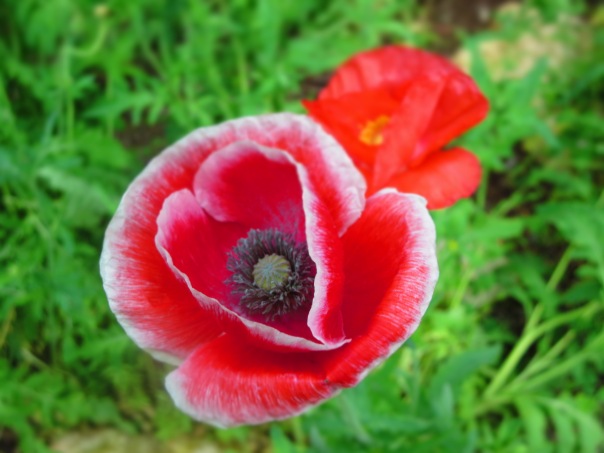Spooky Action Ranch Report | Week Seventeen 2015
April 20th – April 26th, 2015
The Final Harvest : Carrots
With spring now in full swing, it was time to pull out the final produce of our winter garden. The last survivors of the garden were two of our carrot beds. This final harvest of the carrots brought in over eleven pounds of carrots. In addition to those we ate fresh or juiced, we put down 15 quarts of carrots for later. Carrots are fairly easy to can, although peeling them can take quite a bit of time. I prefer to can the carrots already chopped, so that they are easier to fit into the containers and ready to be used in a variety of recipes. I do try to cut them into very large chunks, too, though, so that they retain as much firmness as possible. That won’t be much, though, since high temperature processing as in a pressure canner really takes the firmness out of them.
One of the really nice things about canning carrots is that they can be canned raw, which means you don’t have to do the prep work to cook them and keep them hot before stuffing the jars. Simply Canning offers some very nice directions on how to get the job done. It is important to follow the instructions carefully when you can, as not doing so can run the risk of deadly disease or simply the loss of valuable crops. We take our canning pressure gauge into our local Agriculture Extension office every year to have it checked to be sure it is reading the right pressure and try to keep a close eye on the whole process to be sure the proper temperatures are being met to kill off any potential bad guys that might have hitched a ride on our food.
Plantings of the week
We were also pretty busy this week refilling all of the beds with the spring vegetables.
Tomatoes
Our tomato bed was already over half full, but this week we put in the last of the tomato varieties we will be growing this year, Bush Goliath Tomato. I picked up six babies for transplant from The Natural Gardener, one of our local gardening supply stores. I was drawn to the plants because they had a very firm, compact, and deep green growth pattern. I decided to go with them because they also had a special resistance to damage from root knot nematodes, which we have a problem with in our garden. I have been trying to get resistant varietes of all of our vegetables this season to help reduce the population of the problematic parasites. I have also brought in a host of beneficial nematodes, who should help control the population of their less vegetable friendly cousins.
Cowpeas
We installed a second bed of cowpeas. This time we planted the variety Colossus. This is a line of cowpeas produced by Clemsen University in the 70s. It was bred to have nematode resistance, which is why I chose it for our garden. It should produce more quickly than our other bed, but be just as long lived.
Cucumbers
These little guys are the most vulnerable things I am putting in the garden. Well, I say that because they have been one of the things we have had the hardest time with. I believe that they are generally very susceptible to the nematode problem we are having. Nonetheless, we love pickles, so we are going to try again. We hope that improved soil, the application of beneficial nematodes, and a topical application of zinc and iron will get these plants through their usual troubles and get us some good cucumbers. We have planted Boston Pickling Cucumbers. We shall see how they do.
Okra
We planted two varieties of Okra this year, one that is nematode resistant called Gold Coast Okra and one that is not known as Star of David, which we have enjoyed in the past. Last year, none of our okra survived into maturity. We believe the problem was a combination of nematodes and an over abundance of phosphorus in our soil. We will be correcting for the phosporus by adding the topical application of zinc and iron, and I look forward to seeing which of the two varieties manages to thrive more.
Loving the Poppies
My only pictures from this week were of poppies. I absolutely love the bright colored delicate blossoms on their long thin stems. They reseed themselves each year, and this season I intend to collect them and spread them around the whole yard. I hope that I can get them to establish a wild colony. I am not sure that the deer will allow it, but a girl can dream.

